
Motorola has announced its 2023 Razr family, including the Razr+ and the Razr. The Razr+ will launch later this month, and the other Razr will be released in the coming months. The Razr+ is the more premium of the two devices and the headliner option.
These are only my initial thoughts about the device, but I like what the Razr+ offers. Could the Moto Razr+ put the Lenovo-owned company back on the map? It’s hard to say, but I wouldn’t be surprised if it did.
While foldable devices still aren’t that common on the streets of Toronto, you do see a lot of Samsung’s Galaxy Z Flip line. While I’ve only spent a brief amount of time with Motorola’s latest foldable so far, the Razr+’s expansive 3.6-inch external display makes a strong argument for buying Motorola’s clamshell foldable over Samsung’s.
And yes, the Razr+ is coming to Canada.
Moto Razr+
Moto Razr
Display
Main Screen: 6.9-inch FHD+ 165Hz display, (2640 x 1080) HDR10+ | Cover Screen: 3.6-inch pOLED Display (1066 x 1056)aa
Main Screen: 6.9-inch FHD+ 144Hz display, (2640 x 1080) HDR10+ | Cover Screen: 1.5-inch pOLED Display (1066 x 1056)aa
Processor
Snapdragon 8+ Gen 1
Snapdragon 7+ Gen 1
RAM
8GB of RAM
8GB of RAM
Storage
256GB
128GB
Dimensions (in.)
Open: 73.95 x 170.83 x 6.99mm | Closed: 73.95 x 88.42 x 15.1mm
Open: 73.95 x 170.82 x 7.35mm Closed: 73.95 x 88.24 x 15.8mm
Weight
188.5g (Infinite Black, Glacier Blue) | 184.5g (Viva Magenta)
188.6g
Rear Facing Camera
12-megapixel (f/1.5, OIS) + 12-megapixel (f/2.2, OIS, ultra-wide)
64-megapixel (f/1.7) + 13-megapixel (f/2.2)
Front Facing Camera
32-megapixel
32-megapixel
OS
Android 13
Android 13
Battery
3,800mAh
4,200mAh
Network Connectivity
GSM / HSPA / LTE/ 5G
LTE/5G
Sensors
Fingerprint (side-mounted), accelerometor, gyro, proximity, compass
Fingerprint (side-mounted), accelerometor, gyro, proximity, compass
SIM Type
Nano SIM
Nano SIM
Launch Date
June 16, 2023
Misc
Infinite Black, Glacier Blue, Viva Magenta
Colours: Sage Green; Vanilla Cream; Summer Lilac
Display
Moto Razr+
Main Screen: 6.9-inch FHD+ 165Hz display, (2640 x 1080) HDR10+ | Cover Screen: 3.6-inch pOLED Display (1066 x 1056)aa
Moto Razr
Main Screen: 6.9-inch FHD+ 144Hz display, (2640 x 1080) HDR10+ | Cover Screen: 1.5-inch pOLED Display (1066 x 1056)aa
Processor
Moto Razr+
Snapdragon 8+ Gen 1
Moto Razr
Snapdragon 7+ Gen 1
RAM
Moto Razr+
8GB of RAM
Moto Razr
8GB of RAM
Storage
Moto Razr+
256GB
Moto Razr
128GB
Dimensions (in.)
Moto Razr+
Open: 73.95 x 170.83 x 6.99mm | Closed: 73.95 x 88.42 x 15.1mm
Moto Razr
Open: 73.95 x 170.82 x 7.35mm Closed: 73.95 x 88.24 x 15.8mm
Weight
Moto Razr+
188.5g (Infinite Black, Glacier Blue) | 184.5g (Viva Magenta)
Moto Razr
188.6g
Rear Facing Camera
Moto Razr+
12-megapixel (f/1.5, OIS) + 12-megapixel (f/2.2, OIS, ultra-wide)
Moto Razr
64-megapixel (f/1.7) + 13-megapixel (f/2.2)
Front Facing Camera
Moto Razr+
32-megapixel
Moto Razr
32-megapixel
OS
Moto Razr+
Android 13
Moto Razr
Android 13
Battery
Moto Razr+
3,800mAh
Moto Razr
4,200mAh
Network Connectivity
Moto Razr+
GSM / HSPA / LTE/ 5G
Moto Razr
LTE/5G
Sensors
Moto Razr+
Fingerprint (side-mounted), accelerometor, gyro, proximity, compass
Moto Razr
Fingerprint (side-mounted), accelerometor, gyro, proximity, compass
SIM Type
Moto Razr+
Nano SIM
Moto Razr
Nano SIM
Launch Date
Moto Razr+
June 16, 2023
Moto Razr
Misc
Moto Razr+
Infinite Black, Glacier Blue, Viva Magenta
Moto Razr
Colours: Sage Green; Vanilla Cream; Summer Lilac
Biggest flip external display
The Razr+ hosts a 3.6-inch external HDR10+ LTPO display with a 144Hz refresh rate and a 1066 x 1056 pixel resolution. Surprisingly, the screen is very usable, and it looks great.
Motorola said when it designed the front cover, it kept four fundamentals in mind: ‘immersive,’ ‘functional,’ ‘personal,’ and ‘fun.’

The front display can feature nine panels (or home screens) with widgets, contacts, Google News, apps and even games. Motorola didn’t work with app developers to optimize for the screen, but the smartphone still forces apps to work with the front display. If an app can be in landscape, it should run well on the front screen. Most apps I played with worked really well, except for Instagram. For what it’s worth, Instagram doesn’t work well on any screen that’s not a typical candy bar display.
Another cool thing about the display is selecting whether an app wraps around the two cameras. By tapping the overview button, you’ll see an option for ‘Default View’ or ‘Extended View,’ which either extends or reduces the screen. While the dual cameras obstruct part of the app, I haven’t had any issues with my little usage. You can also access a full-size keyboard to write texts or emails.
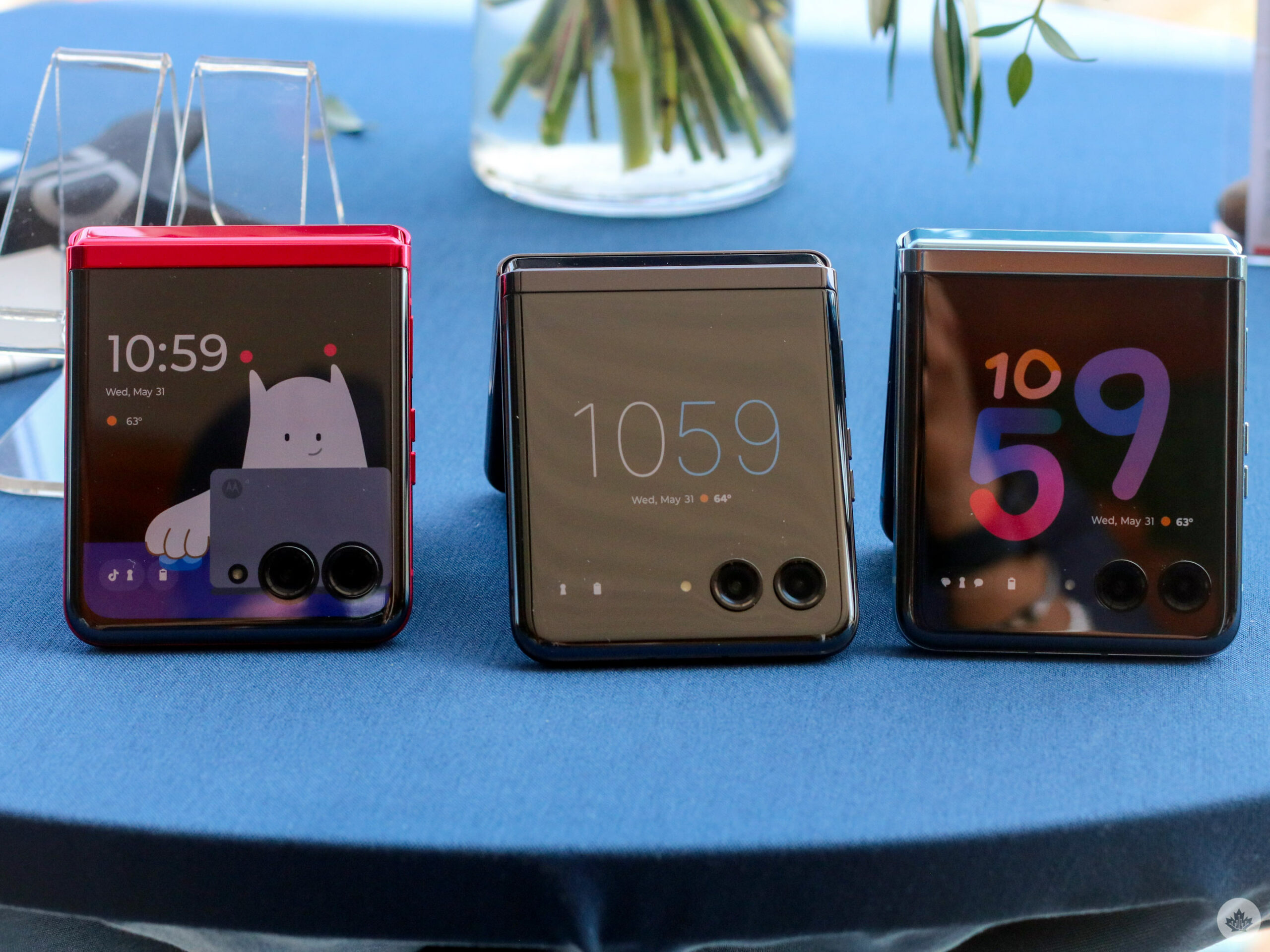
Further, there’s a dynamic notification bar in the bottom right corner that only shows several icons from your recent notifications and battery life. Still, in practice, I think it’ll be good enough.
There’s also app continuity, which is pretty nice. When you start on the external display, you can continue what you’re doing on the larger display. There’s the added bonus of when you close the phone again, you can still continue what you’re doing with a quick press of a button.
I felt like Motorola met the four fundamentals it says it’s aiming for with the Razr+. The display is immersive, you can easily personalize the panels and play games, and it’s quite functional. For example, a Motorola executive I spoke to said that she loaded her boarding pass on the front screen, so she could keep the phone closed when getting onto a plane. Even though it won’t be as useful as the 5.8-inch display on the Pixel Fold or the 6.2-inch screen on the Galaxy Fold 4, Motorola has ensured you can still do a lot with the 3.6-inch front screen.
Expert selfies
The most useful front display feature is taking expert selfies. The phone features a 12-megapixel primary shooter, a 13-megapixel ultrawide with a 108-degree field of view, and a 32-megapixel quad-pixel selfie camera.
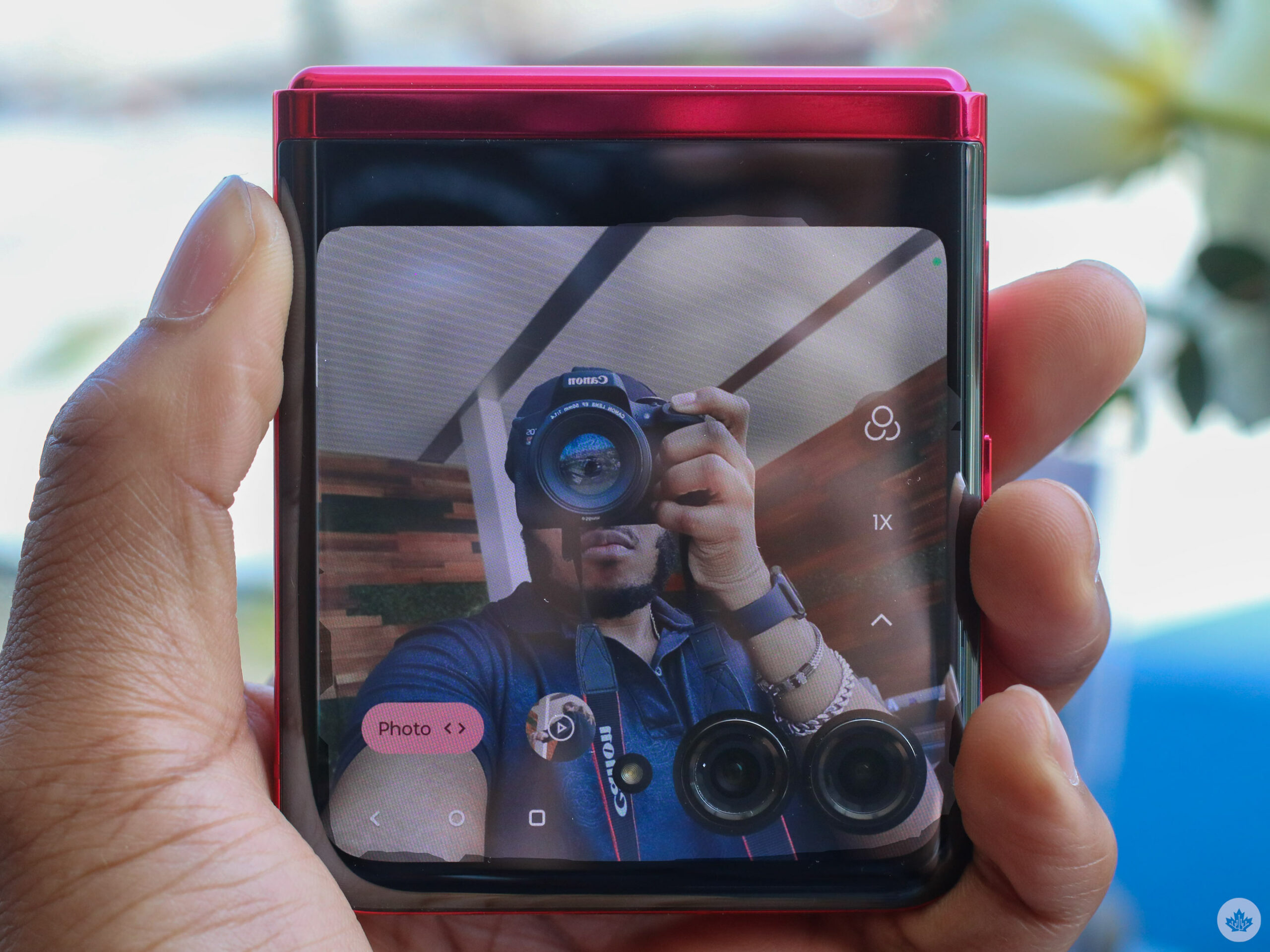
With the large front screen, you have the biggest viewfinder on a flip-style foldable. Any phone where you can easily use the main cameras to take selfies on is a plus in my books.
Of course, I’ll need to spend more time with the camera, but the images look clear and crisp. My darker skin tone was a bit bright, but I also took pictures on a very sunny day, which could easily be the reason. A cool Photo Booth feature also takes four snaps three seconds apart. You can place the phone on a table and turn on Photo Booth and take shots like you’re at an amusement park or party. This is a nice feature for a flip phone to have.

The handset can hold an angle from 40 degrees to 130 degrees so that you can take images from various positions. You can also use the Razr+ as a video recorder and take stable videos with Motorola’s Horizon Lock. Horizon Lock is a new video recording stabilization method that utilizes AI; videos don’t tilt or roll when the user does. Horizon Lock is also available in the Moto Edge+.
Nitty Gritty
When you flip the phone open, you get a 6.9-inch 2640 x 1080 pixel resolution pOLED screen with HDR10+, a 22:9 aspect ratio, and a 165Hz refresh rate that can drop to 1Hz when you’re reading or looking at static images. Across the board, all content looks pretty good on the display, but I still need to spend more time with the Razr+ before passing final judgment. The 165Hz display is also smooth while scrolling through web pages and YouTube’s menus.
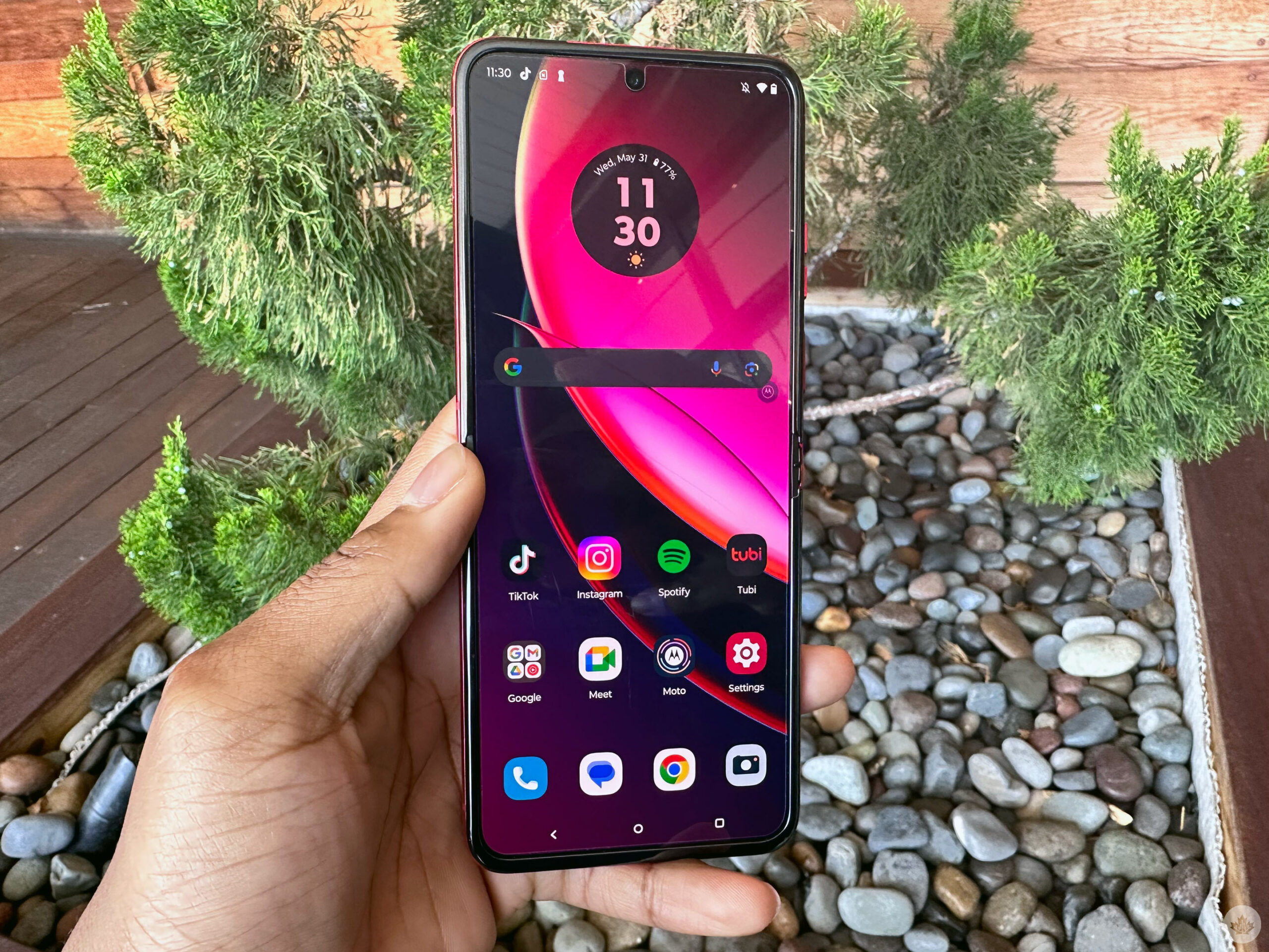
Inside, the foldable features Qualcomm’s Snapdragon 8+ Gen 1 processor, 8GB of RAM and 256GB of storage, alongside Bose-powered Dolby Atmos stereo speakers. I tried to listen to the speakers at the event, but being outside with dozens of people, I felt like I didn’t get the preferred experience and need to test the foldable’s speakers more.
While 8GB of RAM doesn’t seem like a lot, that’s typically what we see in flip-folding style devices like the Z Flip 4. That said, I’ll need to spend more time putting the Razr+ through its paces before offering my final opinion.
There’s also a 3,800mAh battery with 30W charging and 5W wireless charging. A 3,800mAh cell seems small considering the large display on the front and the 6.9-inch screen on the inside with two screens with pretty high refresh rates.
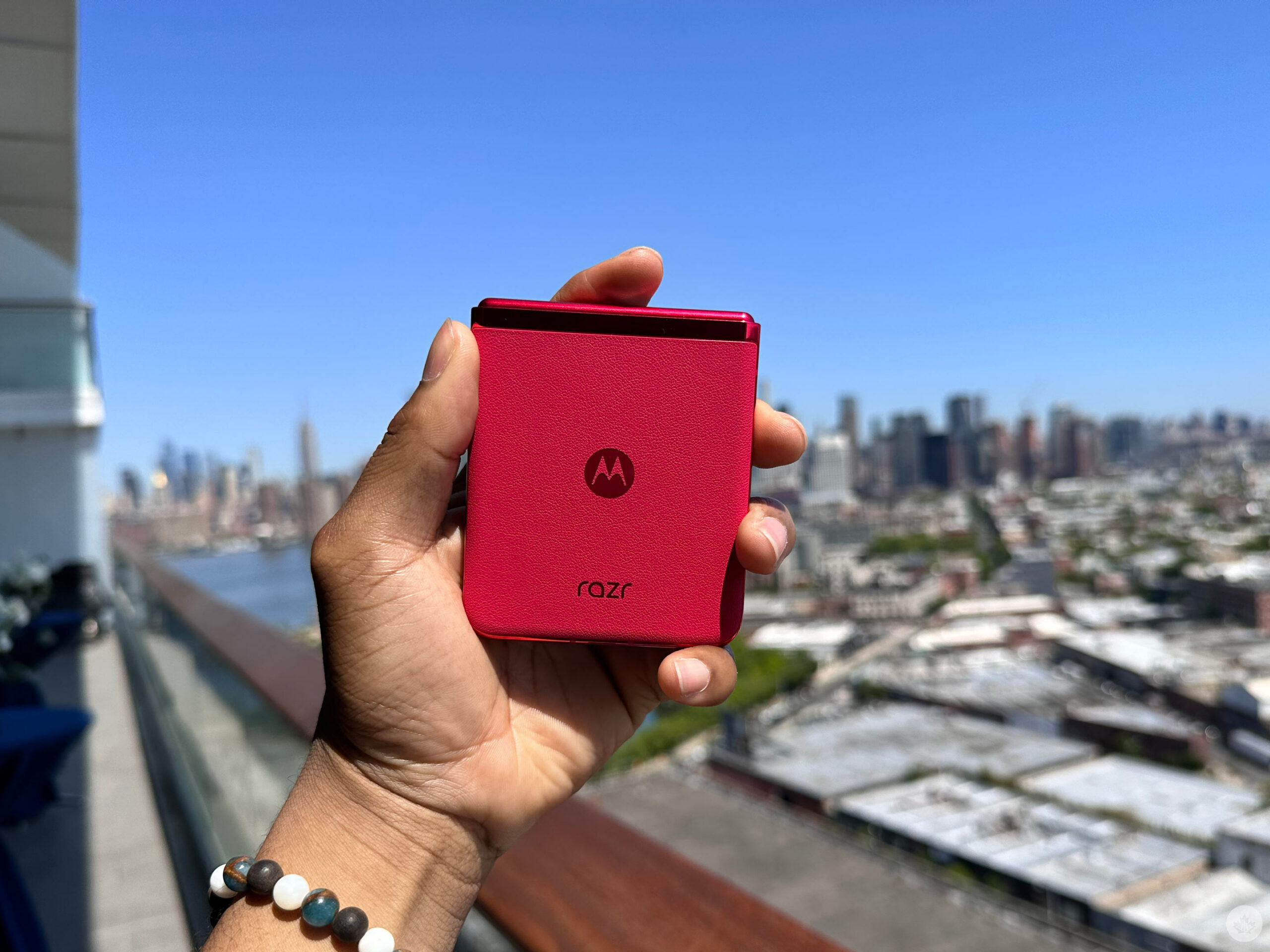
Motorola didn’t use verbiage like “all-day battery life,” so I’m a bit worried about what sort of battery life I’ll encounter when I get my hands on a review unit.
There’s also a triple microphone system for calls.
Razr+ build
The Moto Razr+ features an aluminum frame and Corning Gorilla Glass Victus on the front and back. When you close the device, you’ll see that it’s gapless, aligns perfectly, and is 15.1mm thick.
You’ll notice a dual-hinge system that Motorola has dubbed the Friction Hinge, which feels pretty good to close and open. It’s a frictionless experience until you reach a 40-degree angle; then, resistance builds, and it feels solid. Some might complain about this, but I like it because it allows users to quickly open the device.
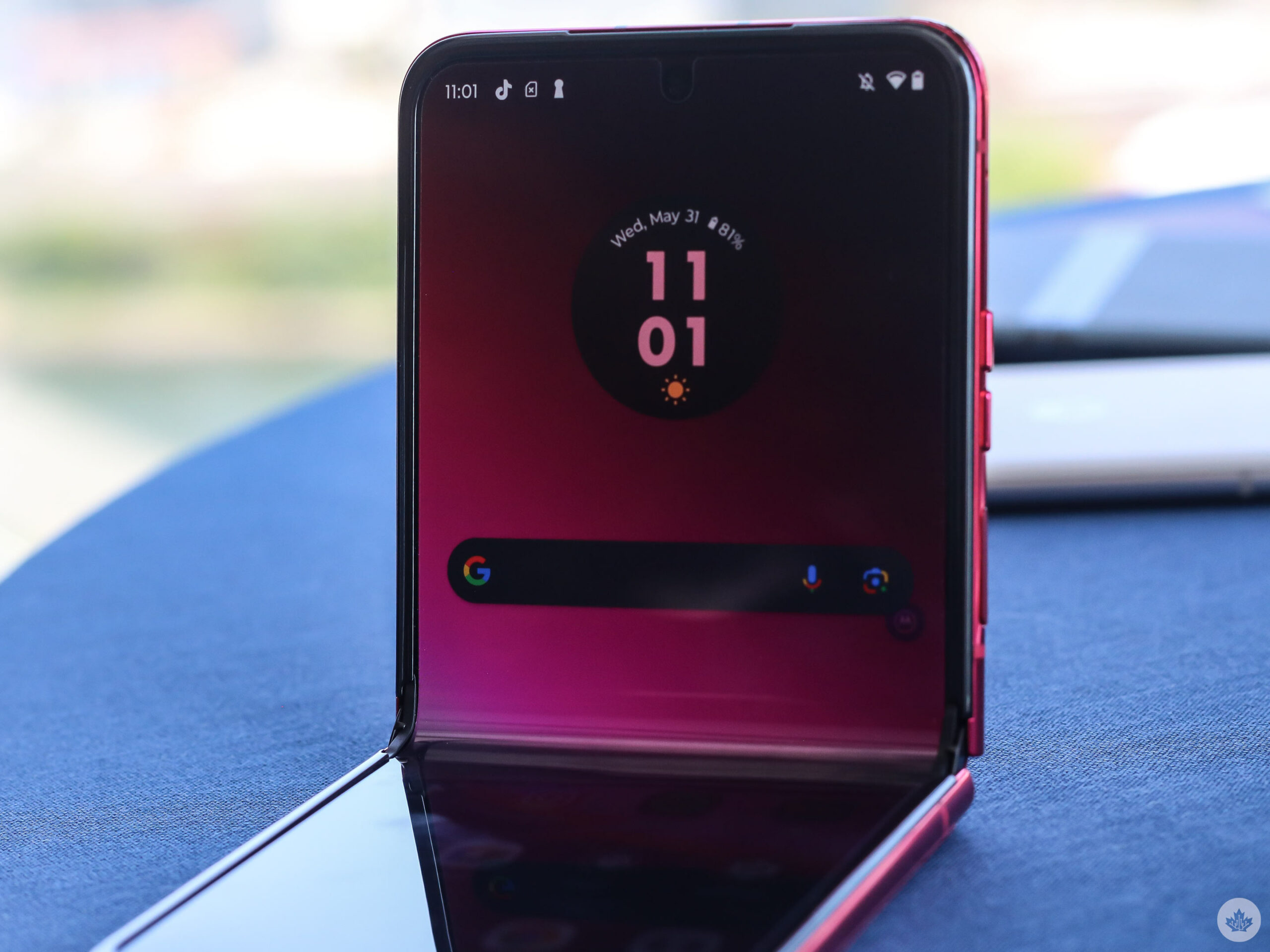
Motorola said it removed the chin from the Razr to provide the largest external display possible. It also did this to offer a bigger screen on the inside as well.
The handset comes in ‘Infinite Black’ and ‘Glacier Blue’ with a glass back and matte finish. A Viva Magenta colour variant with vegan leather is available on Motorola’s website.
Motorola says that both of its foldables were made to survive 400,000 open and closes, but the device only offers IP52. While this is a better dust rating than the Z Flip 4, the Razr+ is only protected against sprays of water up to 15 degrees from a vertical position.
This means don’t get it wet.
The base Razr
The Motorola Razr is more minimalistic and less exciting. It only offers a 1.5-inch external pOLEd display. You definitely can’t do as much on it, but some widgets work, including checking the weather and notifications.
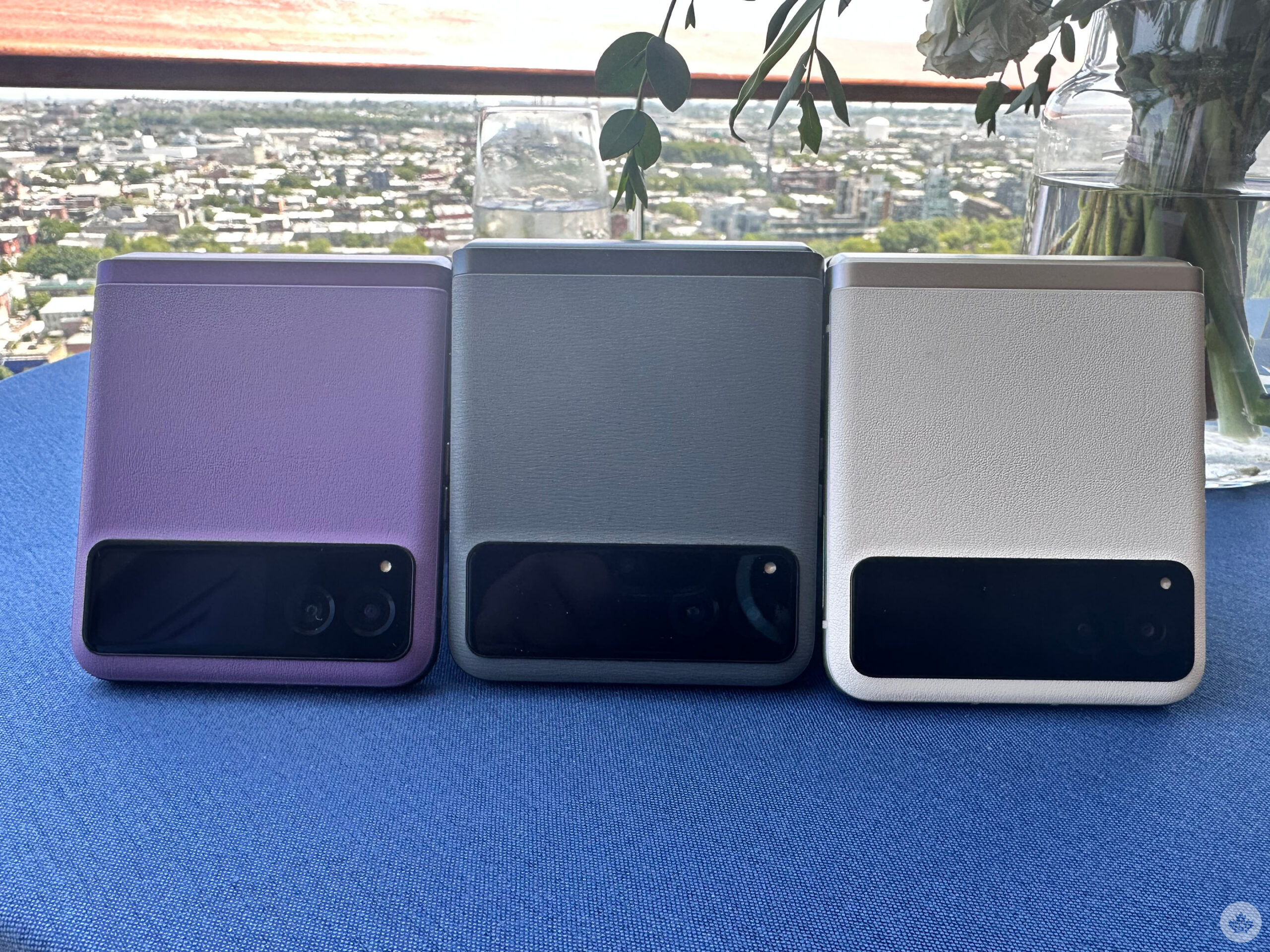
On the other hand, the foldable features a 4,200mAh battery, 30W charging and 5W wireless charging. Further, it offers a 6.9-inch display with a 144Hz refresh rate, Qualcomm’s Snapdragon 7+ Gen 1 chip, 8GB of RAM and 128GB of storage.
There’s also a 64-megapixel front-facing camera, 13-megapixel ultrawide/macro and 32-megapixel selfie. This device comes in ‘Sage Green,’ ‘Vanilla Cream’ and ‘Summer Lilac,’ and all three models feature a vegan leather finish.
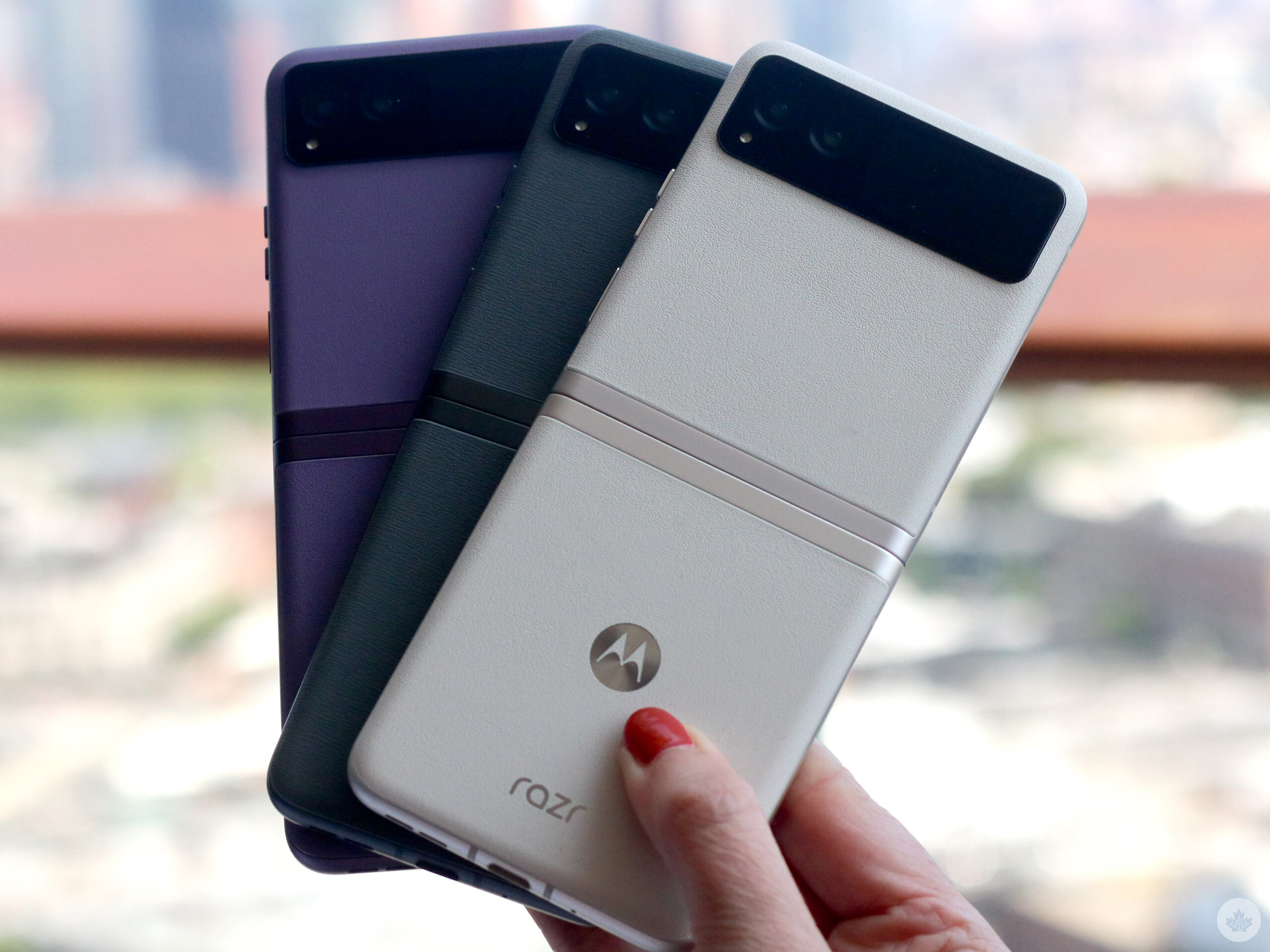
Pricing for the Razr is currently unclear, but Motorola says it’ll be “meaningfully cheaper” than the Razr+. The company says it will reveal pricing in the next few months.
Is Razr back?
The Motorola Razr+ seems like a solid device. I’ll have to put it through its paces when I get a review unit, but I like what I’ve experienced so far. It launches on June 16th online and on June 23rd at carriers at $1,299.
The phone’s large font display is the main selling feature. I think wrapping a screen around the camera sensors is a nice touch. It’s a bit more expensive than the Z Flip 4’s base model in Canada. Still, it offers a slightly bigger battery, higher refresh rate, larger displays, twice the storage, better ultrawide and selfie shooters (on paper), and faster wired charging.
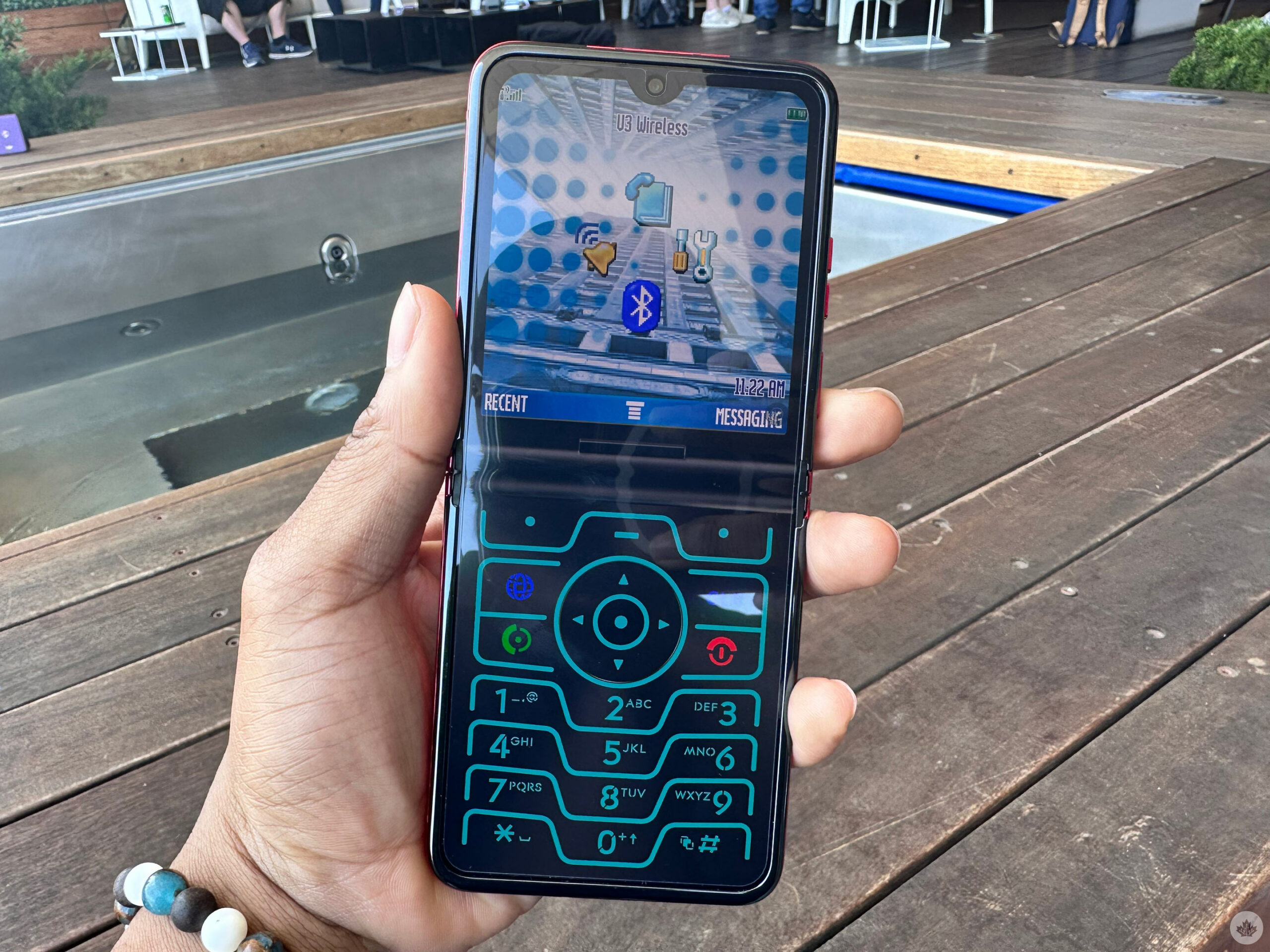
While the processor is a bit old, I had no issues with it in the Z Fold 4, and if it helps keep the pricing down, this is a good move on Motorola’s part.
I can’t say whether Motorola is truly back yet, but the Razr+ is a foldable smartphone I look forward to spending more time with.
MobileSyrup may earn a commission from purchases made via our links, which helps fund the journalism we provide free on our website. These links do not influence our editorial content. Support us here.


